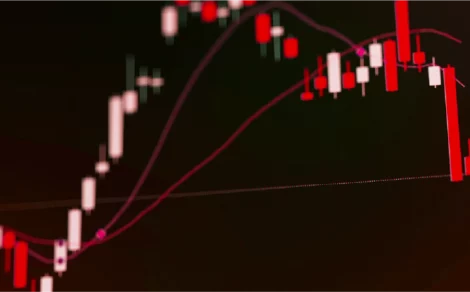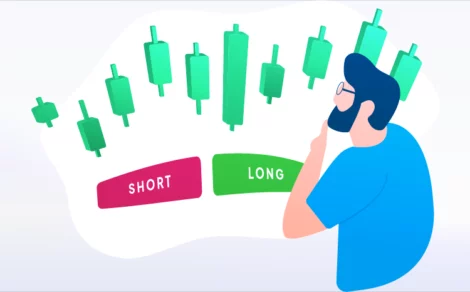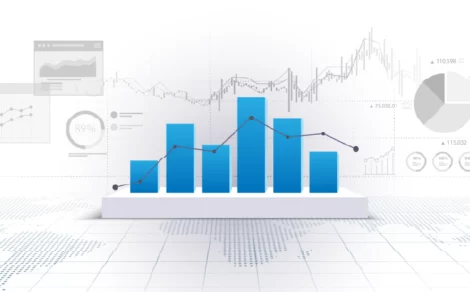Proprietary trading or “prop trading” is a financial tool in which a firm or institution trades in bonds, stocks, commodities, currencies, or other financial instruments using its capital rather than its clients’ capital. While proprietary trading has possible profits, it has risks that must be highly managed.
In this blog, we will discuss the meaning of proprietary trading, how it works, its benefits, examples and how it varies from client-directed trading.
What Does Proprietary Trading Mean?
Proprietary trading involves financial firms or commercial banks investing directly in the market to generate profits rather than gaining commissions by trading on clients’ behalf. This practice allows these firms to capitalise on market opportunities instead of relying on the thin margins from client transactions.
Prop trading can involve a variety of financial instruments, including bonds, stocks, currencies, commodities, and more. Firms involved in proprietary trading believe their competitive edge allows them to generate annual returns that exceed those of bond yields, index investing, and other investment strategies.
How Does Proprietary Trading operate?
After understanding the proprietary trading meaning, you must know how it works. Here is a breakdown of the prop trading working:
- Special Funds and Staff: Firms set aside special funds for proprietary trading and create a specialised staff of experienced traders to oversee investments.
- Sophisticated Trading Tools: These traders are provided with advanced trading softwares that allows them to conduct transactions in real time, enabling them to make fast decisions.
- Market Analysis: Any trading decision is taken following a careful study of market trends, company announcements, and other important market events.
- Key Success Factors: The success of proprietary trading is dependent on three key factors: the skills of the traders, the current market conditions, and the success of their risk management.
- Risk and Reward: Because these trades are made with the company’s capital, all gains go to the company, but any losses also fall on the company alone.
What are the Advantages of Proprietary Trading?
Now that you know what is proprietary trading, have a look at its advantages:
1. Market-Making Functions
Institutions engage in proprietary trading to become active market participants, often attaining market-making status. This not only strengthens their presence in key sectors but also enables them to provide liquidity, benefiting both the market and their own operations. By facilitating trades, they can influence market prices and capitalise on the bid-ask spread, reinforcing their market position and profitability.
2. Technological Infrastructure
Prop trading employs advanced technological systems, improving operational capabilities. It enables institutions to execute trades efficiently and respond quickly to market changes. The use of sophisticated algorithms and high-speed data processing allows for real-time analysis and decision-making, which is crucial for maximising trading opportunities and minimising risks.
3. Strategic Development Framework
Organisations use analytical tools to design and test trading strategies before investing. It helps refine strategies and optimise returns by identifying potential risks and opportunities. By simulating various market scenarios, institutions can adjust their approaches to better align with market conditions, ensuring their strategies are robust and effective.
4. Operational Excellence
Advanced proprietary technology facilitates complex trading strategies and high-frequency trading, giving institutions a competitive edge in executing trades effectively. This technology allows for rapid processing of large volumes of data, enabling traders to make informed decisions quickly and capitalise on fleeting market opportunities. It also enhances the precision and speed of trade execution.
5. Financial Performance
Successful proprietary trading operations utilise institutional capital effectively, with all profits retained by the company. This enhances financial performance and profitability by allowing institutions to leverage their capital for maximum returns. The ability to manage risk and capitalise on market opportunities directly impacts the capital, contributing significantly to the company’s overall financial health.
6. Risk Management Authority
Institutions manage market risks through prop trading by implementing robust risk management protocols. It helps mitigate potential losses and ensure sustainable trading practices. By closely monitoring market volatility and adjusting strategies accordingly, institutions can protect their capital while pursuing profitable opportunities, maintaining a balance between risk and reward.
What are the Examples of Proprietary Trading?
After understanding the proprietary trading definition, you must have a look at the following example of prop trading:
1. Advanced Infrastructure and Expertise
The desk is equipped with cutting-edge technology and staffed by experienced traders who are well-versed in stock and currency markets. This combination of advanced tools and skilled personnel enables them to execute trades effectively.
2. Diverse Trading Strategies
As part of their proprietary trading activities, organisations employ various strategies such as day trading and swing trading. These strategies allow them to capitalise on short-term market fluctuations and longer-term trends.
3. Comprehensive Market Analysis
Prop trading desks utilise both qualitative and quantitative assessments provided by their tools to analyse market conditions thoroughly. This comprehensive approach helps them make informed trading decisions.
4. Global Market Expertise
While specialising in Indian equity markets, these desks are also knowledgeable about global markets. This broad understanding allows them to identify and capitalise on opportunities across different regions.
5. Profit Maximisation
The primary objective of prop trading is to leverage market movements to generate profits for the institution. By focusing on maximising returns, these desks play a crucial role in enhancing the financial performance of their organisations.
What are the Risks Involved in Proprietary Trading?
When understanding what is prop trading, you must consider the following risks involved in it:
1. Lack of Regulation
Many proprietary trading firms operate with less stringent regulatory oversight, which can reduce operational costs but increase the risk for traders. This lack of regulation can expose traders to potential fraud or mismanagement, as there are fewer safeguards in place to protect their interests.
2. Higher Fees
Prop trading firms often charge higher fees for using advanced technological tools. These fees can significantly erode potential profits from trades, impacting the overall profitability of traders. The cost of accessing these high-tech tools can be substantial, affecting the bottom line of trading activities.
3. Intellectual Property Risks
Since proprietary trading firms use their own capital, there is a risk that traders’ methods and strategies might be adopted by the firm. This could lead to potential breaches of intellectual property rights, as traders may find their proprietary trading techniques being utilised without proper compensation or recognition.
What is the Difference Between Proprietary Trading and Client-Focused Trading?
The following table highlights the difference between proprietary trading and client-focused trading:
| Parameters | Proprietary Trading | Client-Focused Trading |
| Objective | To generate profits for the institution using its own capital. | To serve client needs and earn commissions by facilitating trades. |
| Risk and Reward | Higher risk with potential for higher returns as the institution retains all profits and losses | Lower risk, with earnings primarily from transaction fees as minimal exposure to market fluctuations. |
| Market Role | Active market participant, often with market-making status. | Intermediary or broker, connecting buyers and sellers without taking positions. |
| Strategies | Employ various strategies like day trading and swing trading to maximise returns. | Focus on customer service, relationship building, and providing trading solutions tailored to client needs. |
| Capital Usage | Uses the institution’s own capital for trading. | Uses client capital for trading, earning fees from transactions. |
| Regulatory Environment | Often subject to less stringent regulations, which can increase operational flexibility and risk. | Typically subject to stricter regulations to protect client interests and ensure fair trading practices. |
Hedge Fund vs Prop Trading
Both hedge funds and proprietary trading firms are active participants in the financial markets, but they differ in purpose, structure, and operation. Below is a comparative breakdown:
| Aspect | Hedge Fund | Proprietary Trading |
| Capital Source | Trades using pooled funds from external investors. | Trades using the firm’s own capital, without involving client funds. |
| Objective | Generates returns for investors; earns through management and performance fees. | Generates direct profits for the firm itself; no external investors. |
| Risk Appetite | Varies from conservative to aggressive, depending on fund mandate. | Typically more aggressive, as the firm controls its own risk and capital. |
| Transparency & Regulation | Requires investor reporting, regulatory filings, and compliance disclosures. | Internal reporting with minimal external disclosure requirements. |
| Incentive Structure | Fund managers earn via fees (commonly 2% management + 20% performance fee). | Traders earn bonuses or profit share based on desk or individual performance. |
Final Words
Proprietary trading is a powerful financial strategy that allows firms to generate substantial profits using their own capital. While it offers benefits such as higher profit potential, access to advanced technology, and market liquidity contribution, it also comes with inherent risks like market volatility, leverage risk, and regulatory challenges. Understanding these aspects is crucial for firms engaging in prop trading to maximise returns while minimising potential downsides.
Join Torus Digital, the brokerage platform built for modern traders. Get fast execution, deep liquidity, and powerful trading tools at your fingertips. Whether you are a beginner or a pro, we provide the edge you need to trade with confidence.
Start Trading Today!








